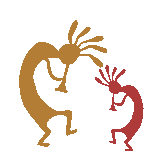|
Start This Feature At
Its Beginning |
|
|
About recording & playback technology
With so many advances taking place in recording and playback
technologies, one tends to take them for granted. Here are a few of the
reasons why there is little simple about them:
- Humans and animals hear sounds and see images produced by so many
different kinds of sources, it's almost impossible to catalog them—speech,
geological events like volcano eruptions and thunderclaps, musical
instruments, street sounds, rushing water, the hiss of a snake, everything
the eye can take in.
- Sounds and images evoke deep and vital responses
from living organisms, ranging from enjoyment to fear to attraction to
flight. They play an integral part in almost every aspect of daily life.
Psychological reactions to sound and imagery are varied and their impact
on an individual can be far reaching.
- The physiology of sound and imagery varies greatly from one animal
species to another and even from one individual of a species to another.
- Physiological, psychological, neuroscientific, and cultural factors
are intimately and subtly interconnected; they profoundly affect the
outcome of an esthetic experience. Science and technology must address
these complex interactions when studying recording and playback;
engineering must take them into account when designing and manufacturing
systems for recording and playback.
- The theory of perspective plays a key role in many representational
art forms. Perspective often plays a role when computer processing is used
to produce or alter sound and imagery. Mastery of certain topics in
mathematics is essential to an understanding of sound and imagery when
perspective is involved.
- People and animals use sound and vision for a vast number of different
purposes ranging from entertainment to warning and flight to manufacturing
to sex.
- Systems for recording and reproducing sound and images are complex and
varied.
- What people mean by sound or image has many shades of
meaning. Consider the old conundrum: Does a tree crashing in the forest
make a sound if there is no one there to hear it? The answer depends on
what one means by
sound. Most dictionaries give over twenty definitions of the word
sound and over twenty of the word image.
- There was a time when the use of sound was restricted to certain arts,
such as music, poetry, drama, and the like. The idea that a statue or
painting could come to life and talk or play a lyre seemed ridiculous. The
idea that a concert—like a child—should be seen and not heard went out
with television. But now the arts have overflowed, one into the other; it
is not uncommon for a film to talk as well as be seen or an animated light
and sound display to activate when a museum patron trips a photoelectric
cell. The variety and subtleties of 21st century artistic media are mind
boggling.
These examples draw mainly upon sound and sight but many others could be
found that draw upon any of the senses. Convert this
page. |




